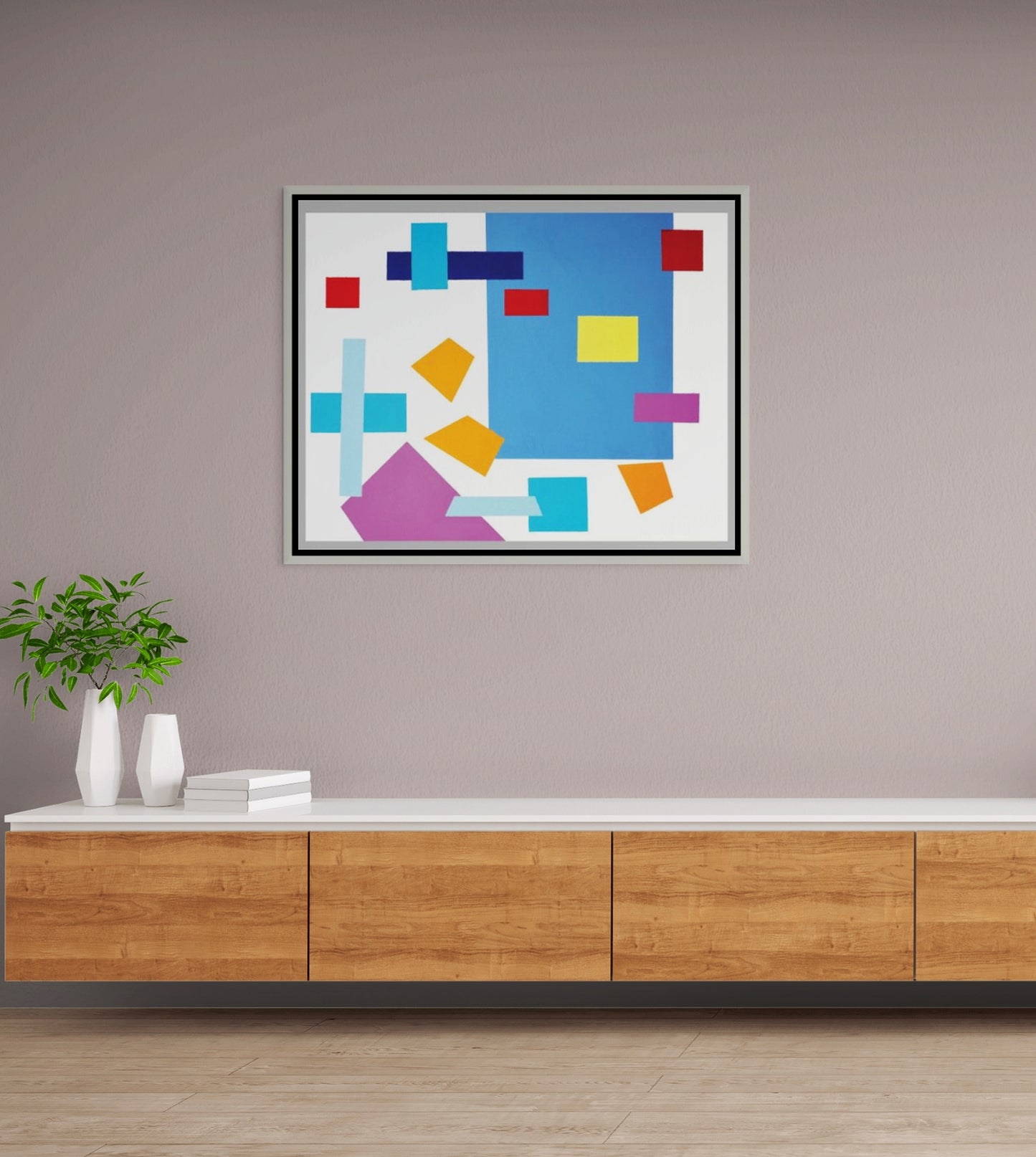Sunny Day 36" x 48"
Sunny Day 36" x 48"
See more paintings from the Floating Color Collection.

James Nowak’s Sunny Day, part of his Floating Color Collection, is an exploration of abstraction through the strategic use of shape, color, and spatial tension. At first glance, the painting seems playful and celebratory, evoking its title by radiating vibrancy and light. Yet beneath this brightness lies a careful orchestration of form and balance that reveals deeper reflections on perception, harmony, and dissonance.
The work is built around an interplay of geometric forms—rectangles, squares, and diamond-like shapes—that appear to hover across the canvas. These elements are not randomly placed; instead, they establish a rhythm, as if choreographed in a visual dance. The large blue rectangle anchors the bottom right, functioning almost as a grounding plane, while contrasting smaller forms seem to float around it, destabilizing the eye’s attempt to fix a single focal point.
This tension between stability and movement is central to the composition. The overlapping and crosswise placements of rectangles suggest intersections of energy, while the tilted orange diamonds push against the canvas’s grid-like logic, injecting a sense of spontaneity.
Nowak’s palette in Sunny Day is deliberately high-contrast and bold. Bright primary colors—red, yellow, and blue—interact with secondary purples and oranges, echoing the joy and intensity of sunlight. The blue field, expansive and dominant, invokes sky or water, while the yellow square radiates with the symbolic energy of the sun.
The juxtaposition of cool hues (blue, turquoise, lavender) with the warmth of orange and red creates dynamic optical vibrations, much like the shimmer of sunlight scattering across different surfaces. This chromatic push-pull draws the viewer’s gaze across the canvas, ensuring that no single area remains static.
True to the Floating Color Collection, this piece conveys buoyancy. The white negative space functions not as emptiness but as atmosphere, allowing the forms to drift as though weightless. The absence of perspectival depth challenges the viewer’s spatial expectations, leaving only relationships of color and shape to suggest dimensionality. The cross-like arrangements amplify this levitation, as though the shapes are caught mid-flight.
Despite its structural rigor, the painting feels celebratory. The scattered yet balanced arrangement captures the essence of a sunlit day—fragmented experiences of brightness, warmth, and play. However, the presence of angularity and sharp edges tempers this joy with tension, reminding us that even in moments of light, dissonance and complexity remain.
Nowak’s abstraction leans toward a more playful, almost improvisational sensibility. By stripping away figuration, Sunny Day encourages viewers to project their own associations—be it sunlight on urban walls, a playground of shapes, or fragments of memory suspended in space.
In this sense, the painting operates simultaneously as both an intellectual and an emotional object. It interrogates how color and form can construct meaning while also evoking immediate sensory delight.
Sunny Day stands as a vibrant example of James Nowak’s ability to merge precision with levity. The work is an experiment in balance, where floating geometries and radiant hues collaborate to create a visual metaphor for sunlight and energy. Through its interplay of tension and release, order and play, the painting transcends its geometric simplicity to embody the fleeting, fragmented joy of a bright day.

